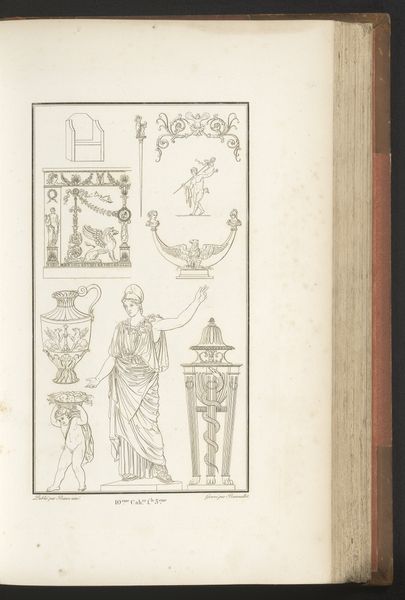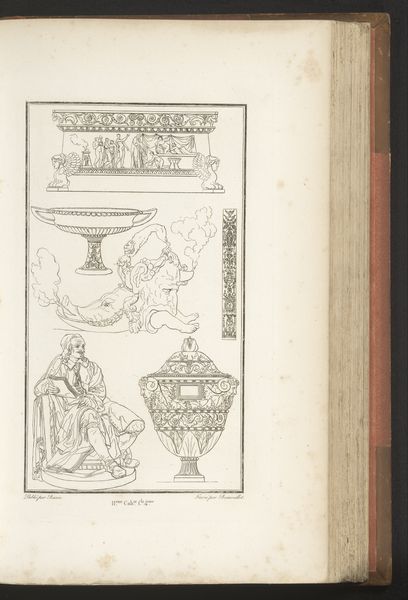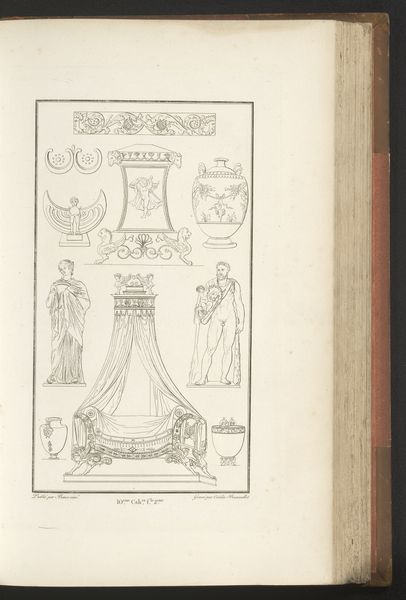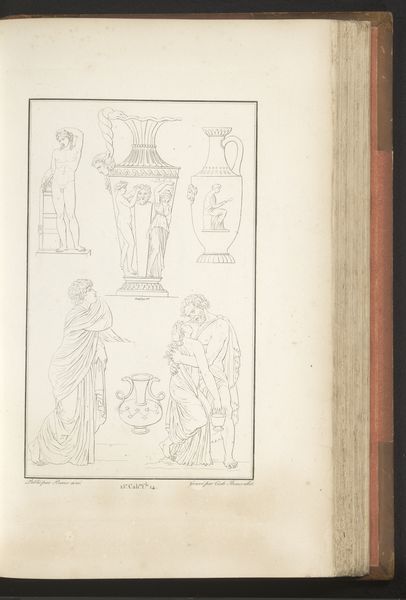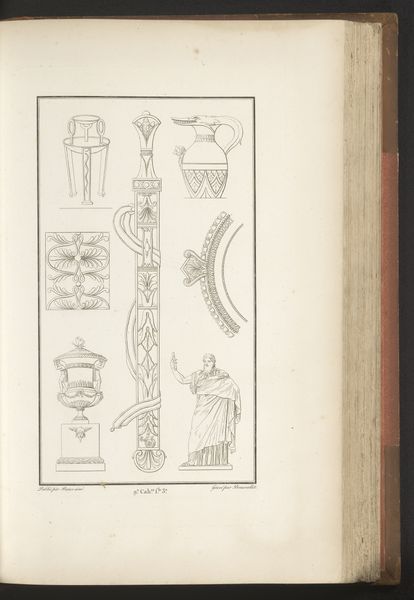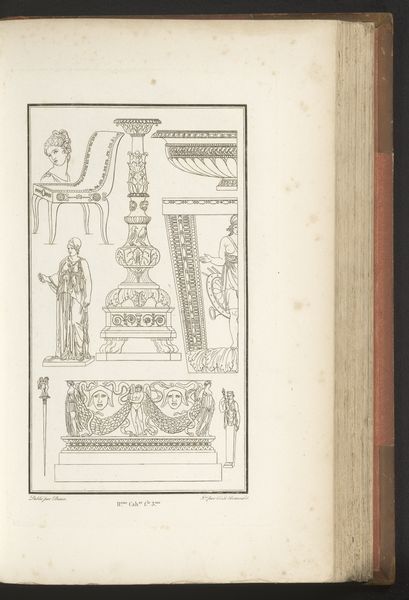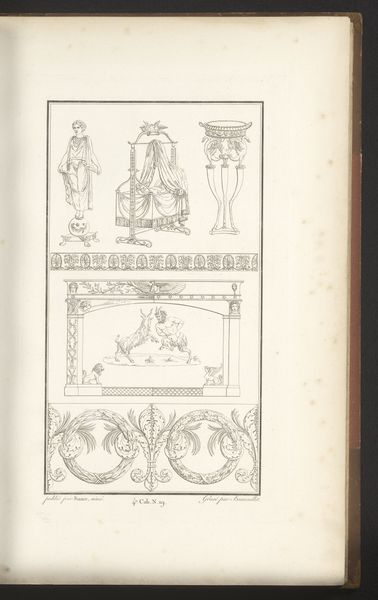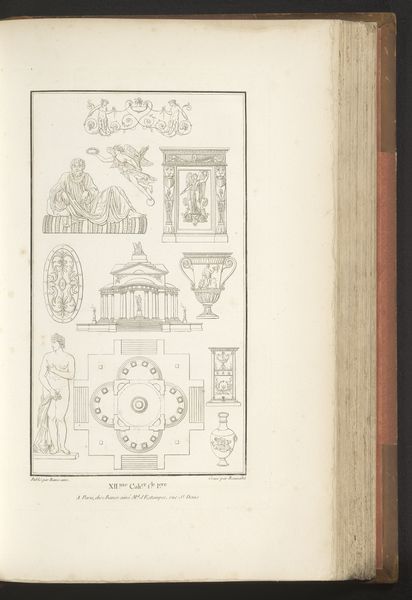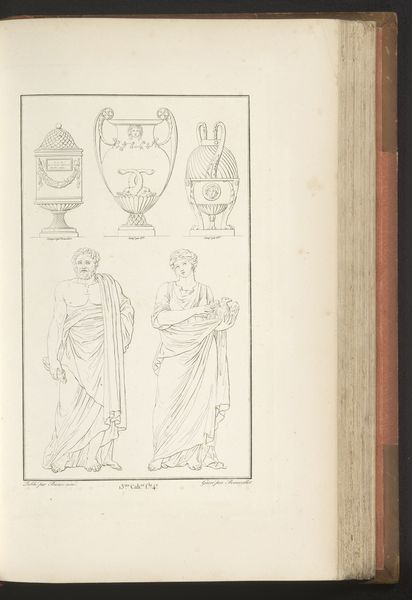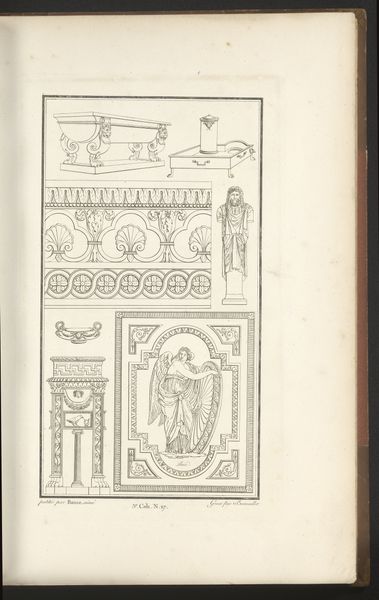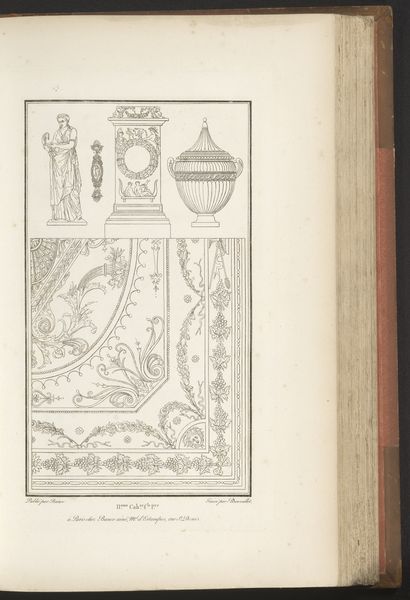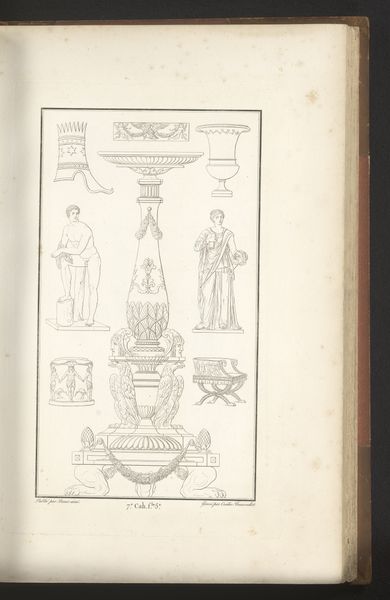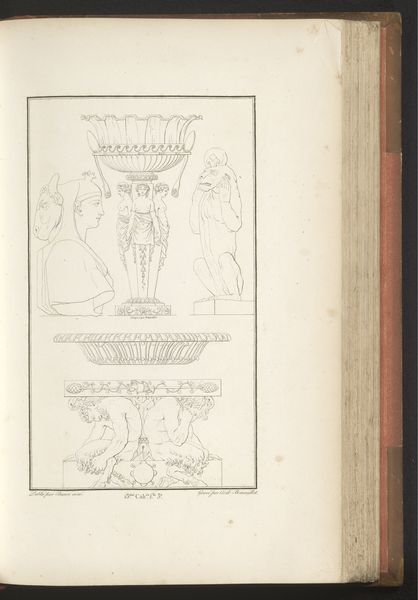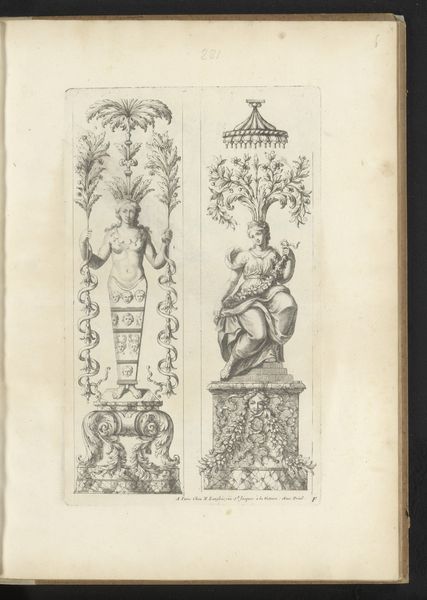
drawing, print, paper, ink
#
drawing
#
neoclacissism
#
aged paper
#
toned paper
#
ink paper printed
# print
#
sketch book
#
figuration
#
paper
#
form
#
personal sketchbook
#
ink
#
geometric
#
pen and pencil
#
line
#
pen work
#
sketchbook drawing
#
history-painting
#
storyboard and sketchbook work
#
academic-art
#
sketchbook art
Dimensions: height mm, width mm
Copyright: Rijks Museum: Open Domain
Here is a page of 'Diverse Ornamenten' by Pierre-Nicolas Beauvallet. Though undated, Beauvallet worked during a time of revolution and change, living from 1750 to 1818. The neo-classical style seen in the image is part of the visual language of power and aspiration deployed by those who sought to emulate ancient empires. This aesthetic emphasized order, reason, and symmetry, and it was deeply connected to the social and political transformations of the time. Amidst the French Revolution, artists like Beauvallet negotiated a complex landscape of patronage and ideology. What do we make of the solemn men draped in classical garb, their faces etched with either wisdom or grief? How are we, as viewers, implicated in their stories? In the aftermath of revolution, amidst the unfulfilled promises of liberty and equality, what new narratives might these classical figures embody?
Comments
No comments
Be the first to comment and join the conversation on the ultimate creative platform.
